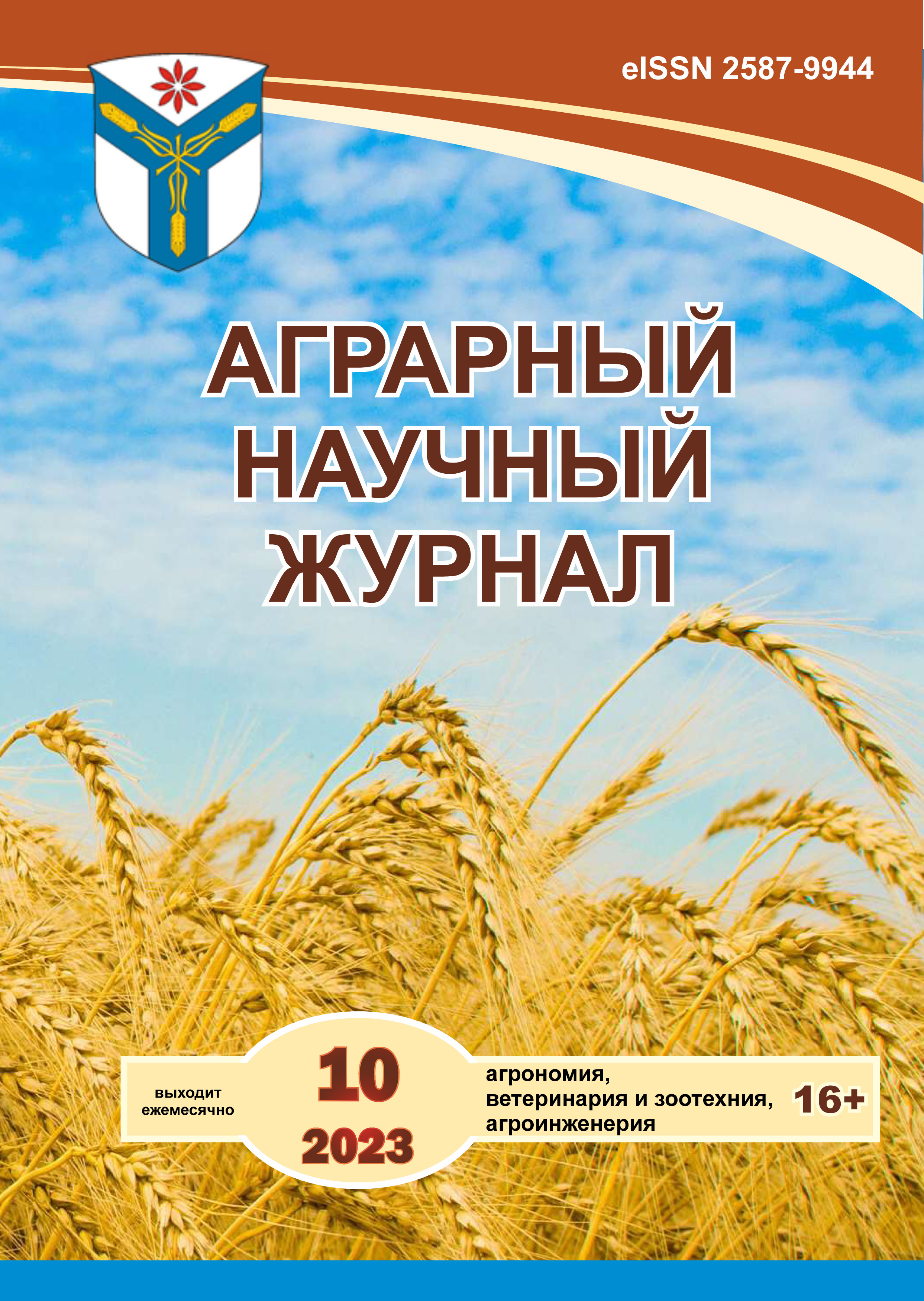The influence of various tillage technologies on soil fertility, weed infestation and crop productivity in crop rotation
DOI:
https://doi.org/10.28983/asj.y2023i10pp66-73Keywords:
weed infestation, method of tillage, effective fertility, crop yield, productivityAbstract
As a result of research for the third rotation of crop rotation (2008-2015), conducted on the basis of the ISA - a branch of the Federal State Budgetary Scientific Institution FNAC VIM in the conditions of the Ryazan region, the influence of various tillage technologies on the fertility of podzolized chernozem, weediness of crops and productivity of crop rotation crops was established. The smallest number of weeds was observed in the variants with combined treatments - up to 11.2-12.9 pcs/m? against the background of the use of herbicides and 21.3-19.6 pcs/m? against the unprotected background, which is lower compared to the control by 19.4-7.2 % in variants with protection and by 28.3-34.0 % in variants without protection. Also in these variants, a decrease in the wet weight of weeds was observed - by 13.5-15.2 % against the background with herbicides, respectively, while against the background without protection, an increase in wet weight was observed by 21.6-11.8 %, respectively. With flat-cut tillage, an increase in weed infestation to 16.2 pcs/m? with herbicides and 37.9 pcs/m? on an untreated background, as well as a wet weight of weeds up to 110.4-108.2 g/m?, respectively, was noted. The maximum amount of digestible forms of nitrate nitrogen is observed when using deep combined treatments up to 7.5-8.1 mg/kg of soil. The greatest increase in the content of humus in the soil layer of 0-30 cm was noted according to the results of the use of 2-tier tillage – up to 3.99 %, which exceeds the initial value by 0.38 %. The highest yield was obtained when using different-depth treatments – 5.19 t/ha without protection and 5.45-5.52 t/ha with the use of herbicides. The maximum productivity of grain crops was also obtained in variants with combined treatments and amounts to 5.93 thousand feed units/ha against the background without protection, and 6.50 thousand feed units/ha against the background of chemicalization.
Downloads
References
Ахметзянов М. Р., Таланов И. П. Влияние приемов основной обработки почвы и растительной биомассы на продуктивность культур в звене севооборота // Плодородие. 2019. № 5(110). С. 41-45. DOI 10.25680/S19948603.2019.110.12. – EDN WGYZER.
Гладышева О. В., Свирина В. А., Артюхова О. А. Влияние разных по интенсивности приемов основной обработки оподзоленного чернозема на состояние плодородия и продуктивность культур // Аграрная наука. 2020. № 7-8. С. 99-102. DOI 10.32634/0869-8155-2020-340-7-99-102. – EDN ILXNQE.
Денисов К. Е., Полетаев И. С., Гераскина А. А. Влияние различных схем питания на урожайность яровой твердой пшеницы при разных способах основной обработки почвы // Аграрный научный журнал. 2022. № 5. С. 10-12. DOI 10.28983/asj.y2022i5pp10-12. – EDN AZILRK.
Мазиров М. А., Матюк М. С., Мазиров И. М. Перспективы внедрения ресурсосберегающих технологий в земледелии России // Владимирский земледелец. 2011. № 2. С. 34-37. – EDN OGYPCX.
Митрофанов Д. В. Зависимость урожайности зерна мягкой пшеницы от неустойчивого увлажнения почвы // Аграрный научный журнал. 2023. № 1. С. 28–33.
Особенности применения ресурсосберегающих технологий сельского хозяйства / У. Ч. Юсубова, [и др.] // Аграрный научный журнал. 2022. № 7. С. 56-58. DOI 10.28983/asj.y2022i7pp56-58. – EDN NKGTIV.
Пестряков А.М. Действие приемов основной обработки оподзоленного чернозема на содержание в почве разных форм азота // Перспективы применения средств химизации в ресурсосберегающих технологиях: материалы науч. конф. М.: ВНИИА, 2013. С. 148-150.
Рабинович Г. Ю., Трешкин И. А. Влияние органических компостов на продуктивность звена севооборота и их окупаемость прибавкой урожая // Вестник российской сельскохозяйственной науки. 2021. № 3. С. 61-65. DOI 10.30850/vrsn/2021/3/61-65. – EDN NYPRMY.
Шевченко В. А., Соловьев А. М., Бубер А. Л. Влияние приемов обработки почвы на агрофизические показатели плодородия при возделывании ячменя на мелиорированных землях Верхневолжья // Плодородие. 2018. № 4(103). С. 40-43. EDN YCMYQX.
Downloads
Published
Issue
Section
License
Copyright (c) 2023 The Agrarian Scientific Journal

This work is licensed under a Creative Commons Attribution-NonCommercial-NoDerivatives 4.0 International License.








